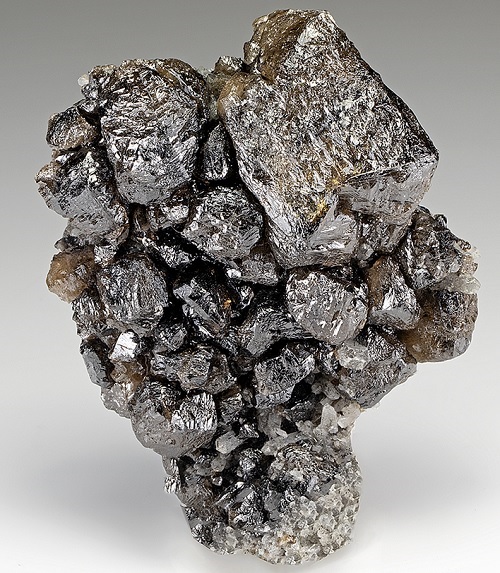Cassiterite (SnO2) Chemische Eigenschaften,Einsatz,Produktion Methoden
Chemische Eigenschaften
Cassiterite is a tin oxide mineral with a hardness of 6 to 7. Its name is derived from the Greek word for tin. It has a tetragonal crystal system and can be found in short, prismatic crystals, though it is more commonly found in massive, granular, radiated, fibrous, or botryoidal forms. It has an adamantine to metallic luster and its color ranges from reddish brown to brownish black, with occasional colorless specimens. While cassiterite can be cut into gems, high-quality pieces are rare. It has been discovered in Australia, Bolivia, Mexico, Malaysia, England, and Namibia.

Physikalische Eigenschaften
Habit: acicular, prismatic, massive, botryroidal, fibrous 'wood tin'.
Color: yellow, reddish
brown, brownish black, or white.
Diaphaneity: transparent to opaque.
Luster: adamantine.
Streak: brownish white.
Fracture: subconchoidal, irregular.
Cleavage: [100] perfect, [110]
indistinct.
Twinning: {101}.
Occurrence: granite, pegmatites and alluvial placer deposits.
Melting point: 1630°C.
Definition
cassiterite: A yellow, brown, orblack form of tin(IV) oxide, SnO
2,that forms tetragonal, often twinned,crystals; the principal ore of tin. It occursin hydrothermal veins and metasomaticdeposits associated with acidigneous rocks and in alluvial (placer)deposits. The chief producers areMalaysia, Indonesia, Democratic Republicof Congo, and Nigeria.
Cassiterite (SnO2) Upstream-Materialien And Downstream Produkte
Upstream-Materialien
Downstream Produkte

